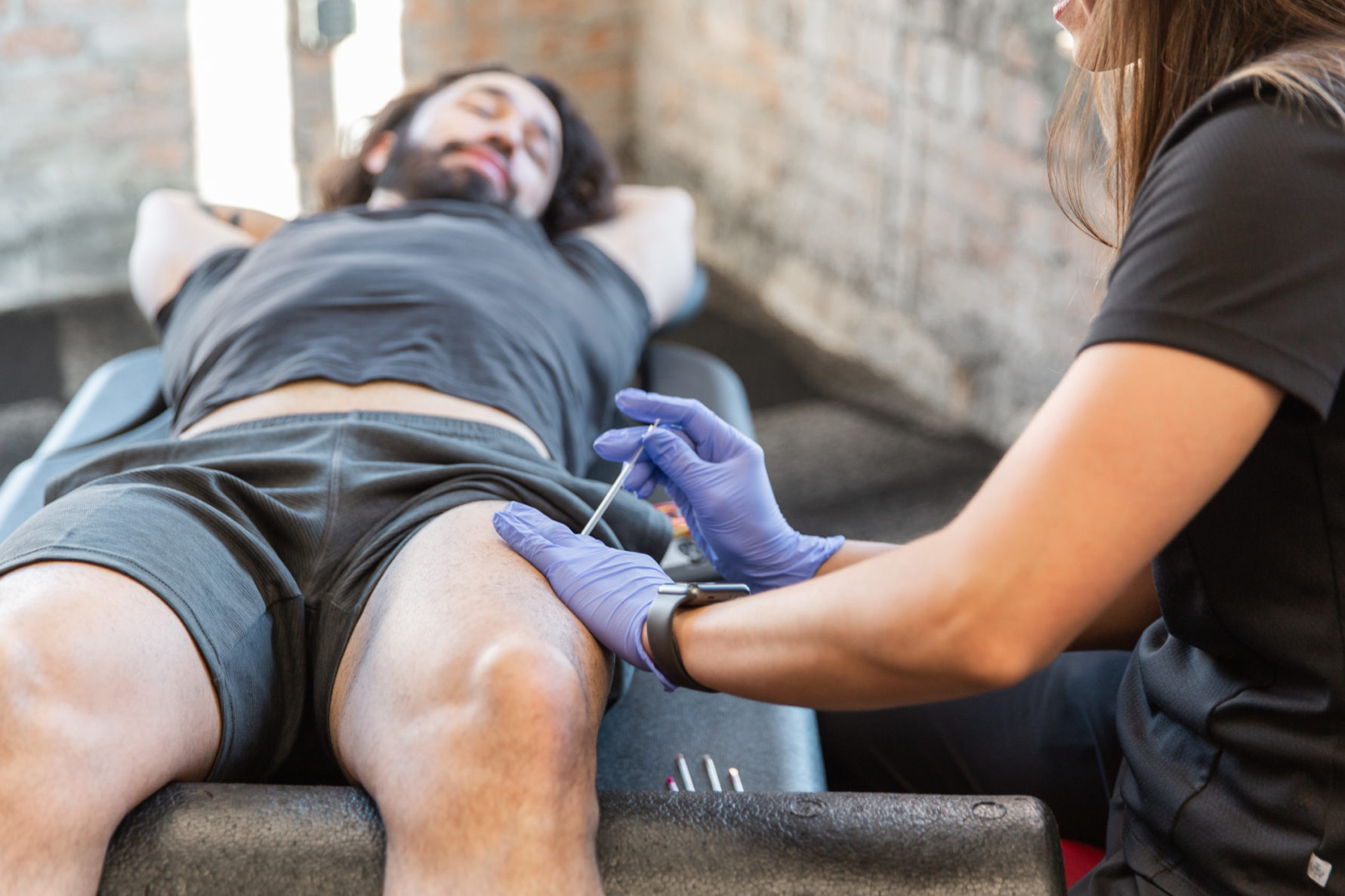Beginner Running Program for Spring Races (Plus, an Example Running Program)
01 February 2020 — Lifestyle

Winter is the perfect time to start training for a spring race. But if you’re new to running, you’ll want to have a beginner running program in place before you just jump up and go.
If you don’t know where to start, that’s okay! Our experts at F.I.T. Muscle & Joint Clinic have created an in-depth program guide so that you can get your body moving and ready for the next race.
Read on for our full advice on creating a beginner running program for spring races.
Why you should have a running program
Gives you a clear goal
A running program allows you to create a clear goal for your next race. You shouldn’t focus on trying to end the race in first place (at least, not starting off). Instead, try setting a goal that is more personal. For example, your goal could be “finishing a 5k without stopping.” Whatever you choose, make sure you’re not comparing yourself to others. This is about you; not where other people are at.
Reduces the risk of injuries
The key to training for a race is to pace yourself. You don’t want to start off doing too much too fast. Overexerting yourself could cause running injuries that may deter you from running your race. A beginner running program ensures that you’re taking it one step at a time. (More on this later!)
Allows you to speak with a professional
If you’re concerned about your joints or muscles, a doctor or chiropractor in Kansas City can help you create a safe running program that’s catered to your body. You can also ask for a range of motion test to catch any deficiencies before you start.
Why Athletes Should Use Preventative Sports Medicine in Kansas City
How to create a running program

You can find guides online to help you get started, but remember: your beginner running program should be catered to you. Everyone is different, so it’s important to listen to your body as you create and begin your running plan for spring races.
Tip 1: Pick a race
Before you do anything, you’ll want to pick a race. Spring is full of different races that support a variety of causes and charities. Do your research on each race, including the sign-up dates, location, and time of the race. The specific length and course of the spring race will dictate how to create your running plan.
If you’re in the Kansas City area, you can check out this list for upcoming spring races.
Tip 2: Give yourself time
When looking for a spring race, it’s essential you give yourself enough time to train. If you’re a beginner, you may want to start with a race that allows for a 10-week program or so. You can also walk a race, which means you can sign up for a race a lot sooner as long as you’re used to being active.
Tip 3: Focus on the minutes, not miles
Even though races are measured in distance, that shouldn’t be your main priority when creating your running program. When you focus on running longer (not farther), you’ll naturally start to increase your distance.
Tip 4: Include strength training and rest days
Strength training helps you build your muscle and promote joint health, which will make running easier as time passes. It also increases your metabolism, which can help you endure longer periods of exercise. Designate at least two days a week where you’re lifting weights, doing pilates, or performing other strength-building exercises.
In general, you don’t want to just go, go, go without resting your body. Many people think that non-stop exercise will help build endurance, but it’s actually the opposite. You need rest days to rejuvenate your muscles so that you can get ever better at running.
Tip 5: Try out the run-walk method
The run-walk method is a great way to build up endurance and increase race times without overexerting yourself. It’s not just about walking whenever you’re tired. Instead, you walk even when you’re not tired. For example, if you’re a beginner, you can run for 30 seconds then walk for 60 seconds for the duration of your run.
Best foods to complement your running program

Food is fuel for your body, and when you’re training for a run, it’s all about eating the right food. You don’t have to go on a particular diet or restrict any particular types of food. The key is to pay attention to your nutrition: eat balanced and limit the amounts of processed sugars and unhealthy fats you consume on a weekly basis.
There are a few inexpensive items you can add to your grocery list that are great for runners of all levels who are beginning running programs for spring races.
-
- Bananas: Bananas are a high-carb food that give you the energy boost needed to start a run. They’re especially great for long-distance runners.
- Salmon: Salmon is a seafood superfood (try saying that five times fast). Not only is it a great source of protein, it’s also full of omega-3 fats.
- Oats: Oats are both high in carbs and fiber, but the benefits don’t stop there. Since oats have a low glycemic index, your blood sugar rises slowly, giving you energy over a longer period of time.
- Broccoli: Broccoli is packed with vitamin C, which can help prevent sore muscles after an intense workout. Plus, broccoli supplies your body with vitamin K, calcium, and folic acid to strengthen bones.
- Nut butter (peanut or almond): Nut butter is a great source of vitamin E, a super effective antioxidant among vitamins. Just a couple of tablespoons are jam packed with protein to help build muscle. Even though they are high in fat, they’re full of monounsaturated and polyunsaturated fats, which help strengthen your immune system and lower cholesterol.
- Eggs: The protein in eggs contain all the necessary amino acids that help muscle recovery. One egg alone gives you about 30% of daily value for vitamin K.
Proper running form and technique
Throughout your beginner running program, you’ll want to make sure you’re using the best technique possible. It may even help if you have a friend or family member record you as you run so you can watch yourself and drill down on exactly what you can improve on, such as:
Posture
You should always stand tall and hold your torso upright, even when you get tired. Slumping decreases lung capacity, which could make you more out of breath, and increases your heart rate.
Breathing
We understand that it starts getting hard to breathe during long periods of exercise, but when you notice your breaths becoming shallow, try to breathe more comfortably. Deep, comfortable breaths can help you sync your breathing with your footsteps, allowing yourself to fall into a rhythm that’ll make running easier and less of a chore.
Arms
You should bend your arms at a relaxed 90-degree angle. Let them swing naturally without having your arms cross over your chest. Remember, your arms should move in a forward-and-back motion, not side to side.
Eye contact
Don’t look down as you run. Instead, your eyes should be focused ahead of you. This helps you maintain good posture while avoiding mishaps that could come from not seeing what’s ahead. It can also help prevent the vertigo or dizziness that can come with watching the ground for too long.
Example 12-week beginner running program (5K race)

Now that you know the basics of creating a running program, we’ll show you an example of what your program could look like.
Note: This program is just an example. Make sure you talk to a professional and follow your own body when creating your personalized running program.
Week 1
Number of runs: 3
- Warmup: 5 minute walk
- Workout:
- Jog 1 minute, walk 90 seconds (8x)
- Cooldown: 5 minute walk (or until recovered)
Week 2
Number of runs: 3
- Warmup: 5 minute walk
- Workout:
- Jog 90 seconds, walk 2 minutes (6x)
- Cooldown: 5 minute walk (or until recovered)
Week 3
Number of runs: 3 to 4
- Warmup: 5 minute walk
- Workout:
- Jog 2 minutes, walk 90 seconds; jog 3 minutes, walk 3 minutes (2x)
- Cooldown: 5 minute walk (or until recovered)
Week 4
Number of runs: 3 to 4
- Warmup: 5 minute walk
- Workout:
- Jog 3 minutes, walk 90 seconds (1x)
- Jog 5 minutes, walk 2.5 minutes (1x)
- Jog 2 minutes, walk 2 minutes (1x)
- Jog 5 minutes, walk 2 minutes (1x)
- Cooldown: 5 minute walk (or until recovered)
Week 5
Number of runs: 4
- Warmup: 5 minute walk
- Workout:
- Jog 5 minutes, walk 3 minutes (3x)
- Cooldown: 5 minute walk (or until recovered)
Week 6
Number of runs: 4 to 5
- Warmup: 5 minute walk
- Workout:
- Jog 5 minutes, walk 3 minutes (2x)
- Jog 7 minutes, walk 3 minutes (1x)
- Cooldown: 5 minute walk (or until recovered)
Week 7
Number of runs: 4 to 5
- Warmup: 5 minute walk
- Workout:
- Jog 7 minutes, walk 3 minutes (2x)
- Jog 5 minutes, walk 3 minutes (1x)
- Cooldown: 5 minute walk (or until recovered)
Week 8
Number of runs: 4 to 5
- Warmup: 5 minute walk
- Workout:
- Jog 10 minutes, walk 4 minutes (2x)
- Cooldown: 5 minute walk (or until recovered)
Week 9
Number of runs: 4 to 5
- Warmup: 5 minute walk
- Workout:
- Jog 10 minutes, walk 3 minutes (2x)
- Cooldown: 5 minute walk (or until recovered)
Week 10
Number of runs: 4 to 5
- Warmup: 5 minute walk
- Workout:
- Jog 15 minutes, walk 2 minutes (1x)
- Jog 5 minutes, walk 2 minutes (1x)
- Cooldown: 5 minute walk (or until recovered)
Week 11
Number of runs: 4 to 5
- Warmup: 5 minute walk
- Workout:
- Jog 20 minutes
- Cooldown: 5 minute walk (or until recovered)
Week 12
Number of runs: 4 to 5
- Warmup: 5 minute walk
- Workout
- Jog 25 minutes
- Cooldown: 5 minute walk (or until recovered)
Let F.I.T. Muscle & Joint Clinic help with your running efforts
If you’re in the Kansas City area, our expert team of chiropractors and physical therapists is here to help you jumpstart a healthy running experience. We’re dedicated to making sure your joints and muscles are in tip-top shape at all times.
Have a running injury?
Whether you’re suffering from joint issues and need chiropractic rehabilitation exercises or need physical therapy services, F.I.T. Muscle & Joint offers a wide-range of services to get you back on the road.
Contact us Schedule an appointment



